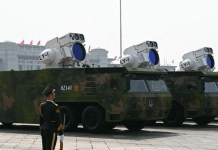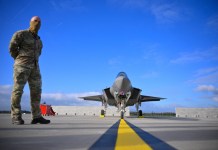The British Army has reportedly placed an order for 30 nano drones called ‘Bug’, which fit in one’s palm and have the ability to spy on targets 2 kilometers away. Weighing roughly 196 grams, the Bugs will provide the soldiers with the required intelligence regarding the threat of enemies from a distance.
Countries such as the United States, Turkey, Israel, and China have invested heavily in military drone technology realizing the vital role of unmanned aerial vehicles (UAVs) could play in future warfare.

The UAVs come in different sizes; the US’ 47.6-feet long Northrop Grumman RQ-4 is considered the biggest drone made so far. It has a 130.9 feet wingspan, wider than the Boeing 737 airliner. The US’ Black Hornet Personal Reconnaissance System is the smallest combat-proven drone.
With the UK now coming in, there is going to be stiff competition in the drone market. The country has already lined up the SkyGuardian, and SeaGuardian variants of the lethal MQ-9 Reaper drones which will be inducted into the Royal Armed Forces next year.
While the Reaper drones can perform a different set of combat tasks like taking out threats all on their own, the nano drones have specific roles.
The Bugs have been developed by the London-headquartered British multinational defense, security, aerospace company, BAE Systems in collaboration with British drone manufacturer UAVTEK.
“In collaboration with UAVTEK, we have developed a nano ‘Bug’ drone and delivered the first 30 units to the British Army, which has put it through its paces as part of a trial,” BAE Systems said in a press release.
At present, the drones have a battery life of around 40 minutes and boast the ability to fly in strong winds of more than 50mph (80km/h).
Described as a soldier’s eyes, the drones are capable of handling uncompromising weather during an ‘Army Warfighting Experiment’, which was carried out by the UK Ministry of Defence’s Future Capability Group.
“In even the toughest weather, the Bug can deliver vital tactical intelligence on what’s around the corner or over the next hill, working autonomously to give troops a visual update,” said James Gerard, Principal Technologist at BAE Systems’ Applied Intelligence.
This video feed could be shared multi-domain, enabling commanders on land, sea, and air “to increase their situational awareness and inform their decisions,” he added.
In 2019, the Ministry of Defense had announced an investment of around £66m in the field of military robotic projects. This included similar “mini-drones” for carrying out surveillance missions as well as remote-controlled fighting vehicles and self-driving logistics vehicles.
Earlier, the head of the British Armed Forces had said that robots could make up a large part of the army by 2030. According to reports, some autonomous military equipment has already been deployed for missions in Iraq and Afghanistan.
BAE Systems has reportedly also said that the firms are currently working on equipping the drones with additional sensing equipment in order to enhance their capabilities.
The drones are now increasingly used not only for military purposes but also for delivering goods, providing surveillance, helping in emergency responses during calamities.

However, the increased usage of drones combined with their enhanced abilities has called for effective monitoring in both civilian and military situations.
The use of drones has been under immense scrutiny by human rights groups in recent times after the United States and Turkey were found to be using the UAVs to assassinate “enemies beyond their boundaries”.
As per reports, the European Union as well as the UK, have plans to deploy high-altitude drones to spot refugees and migrants in the Mediterranean Sea and in the Channel.
“Drone warfare is evolving in multiple ways including the increasing use of nano surveillance drones like these new ‘Bug’ UAVs by individual military units. Such systems, however, can only give very sketchy intelligence and are likely to give a false sense of security and situational awareness to units on the ground,” said Chris Cole, director of Drone Wars, an independent body.
He underlined that in the past, commanders ordering airstrikes based on information obtained via drones “have turned out to be very different” from the situation on the ground, leading to civilian casualties.
Follow EurAsian Times on Google News




